High-functioning depression is often invisible. Those struggling may appear productive, successful, and emotionally regulated on the outside—yet internally, they report a lingering sense of exhaustion, disconnection, and emotional flatness. Traditional approaches often overlook this nuanced form of suffering, leaving many searching for alternative, non-medication therapies for depression that address the energetic, emotional, and physiological layers of the human experience.
At Quantum Clinic, we work at the intersection of science, somatics, and subtle energy fields to support holistic mental health. Our integrative service, Scalar Upgrade, uses the RASHA Technology, a scalar energy therapy, and our proprietary Coherence Method to address underlying energetic imbalances commonly reported in individuals with high-functioning depression.
The Biology of Burnout: Understanding High-Functioning Depression
Though high-functioning depression is not a formal diagnosis, it often includes persistent low mood, emotional blunting, chronic fatigue, and a sense of meaninglessness—even in the absence of acute stressors. These symptoms correlate with dysregulation in the autonomic nervous system, reduced heart rate variability (HRV), and impaired mitochondrial energy production.
Many clients describe feeling like they’re “running on empty” or “moving through life in grayscale.” Standard treatments, including SSRIs and talk therapy, can be helpful but may not fully address the energetic stagnation or subtle physiological undercurrents of this condition.
This is where frequency therapy for emotional healing offers promising new terrain.
Scalar Energy Therapy: An Emerging Approach for Depression
Scalar energy therapy for depression is a non-invasive modality that utilizes non-linear, non-Hertzian fields to promote systemic balance. Though still considered experimental, scalar energy has shown early promise in:
- Enhancing cellular membrane potentials
- Supporting detoxification pathways
- Modulating the body’s biofield and emotional state
- Encouraging mitochondrial ATP production through vibrational entrainment
When paired with intention and inner coherence, scalar fields may act as a catalyst—restoring the body’s native rhythm and facilitating emotional clarity. At Quantum Clinic, this is delivered through the Scalar Upgrade experience, which uses RASHA technology to broadcast specific frequency signatures that support parasympathetic activation and cellular renewal.
The Coherence Method for Mood Regulation
Our approach begins with biofeedback training in heart-brain coherence—a practice that entrains respiration, heart rate variability, and blood pressure into a synchronized rhythm. This physiological harmony supports improved vagal tone, enhanced self-regulation, and mood stabilization.
When coherence is established, the nervous system becomes more receptive to subtle energetic inputs. This is where the synergy between coherence and scalar energy therapy becomes uniquely powerful.
Clients who undergo this layered experience often report:
- A lifting of emotional heaviness
- Enhanced clarity and decision-making
- Renewed access to motivation and creative flow
- A felt sense of wholeness and peace
Emotional Resilience Through Energy Medicine
Energy medicine doesn’t bypass psychological work—it supports it. By addressing the vibrational and autonomic foundations of emotional health, our integrative services aim to rebuild emotional resilience through energy medicine, empowering clients to reconnect with purpose and vitality.
This multi-modal process works best as part of a comprehensive healing journey, and we always recommend that clients maintain continuity with their healthcare providers, especially when tapering from medications or undergoing psychiatric care.
Toward a New Paradigm: Non-Medication Therapy for Depression
As interest grows in non-medication therapy for depression, especially among those who feel stuck despite “doing all the right things,” it becomes increasingly important to offer interventions grounded in both subjective outcomes and physiological data. While more research is needed to fully validate the mechanisms behind scalar and frequency therapies, preliminary findings and lived experience suggest these modalities may offer substantial benefit—particularly when conventional options fall short.
By optimizing the cellular energy environment and training the nervous system into coherence, we open the door to profound shifts in how mood, motivation, and emotional vitality are experienced.
If you or someone you know is navigating high-functioning depression and seeking a gentle, integrative path to healing, Scalar Upgrade may offer a new beginning—from the inside out.
Want to read more research before your visit? Check out these academic sources supporting this blog:
Hammerschlag R, Levin M, McCraty R, et al. Biofield physiology: A Framework for an emerging discipline. Global Advances in Health and Medicine. 2018;4(1_suppl). doi:10.7453/gahmj.2015.015.suppl
Karabatsiakis, A., Böck, C., Salinas-Manrique, J., Kolassa, S., Calzia, E., Dietrich, D. E., & Kolassa, I. T. (2014). Mitochondrial respiration in peripheral blood mononuclear cells correlates with depressive subsymptoms and severity of major depression. Translational psychiatry, 4(6), e397. https://doi.org/10.1038/tp.2014.44
McCraty, R., Atkinson, M., Tomasino, D., & Bradley, R. T. (2009). The coherent heart: Heart–brain interactions, psychophysiological coherence, and the emergence of system-wide order. Integral Review, 5(2), 10–115. Access: https://www.integral-review.org/issues/vol_5_no_2_mccraty_et_al_the_coherent_heart.pdf
Lane, J. D., Kasian, S. J., Owens, J. E., & Marsh, G. R. (1998). Binaural auditory beats affect vigilance performance and mood. Physiology & behavior, 63(2), 249–252. https://doi.org/10.1016/s0031-9384(97)00436-8
Lehrer, P., & Gevirtz, R. (2014). Heart rate variability biofeedback: How and why does it work? Frontiers in Psychology, 5, 756. https://doi.org/10.3389/fpsyg.2014.00756
Rein, G. (2000). Biological Interactions with Scalar Energy Cellular Mechanisms of Action. International Association of Psychotronics Research, 1–4. Accessed: https://www.cia.gov/readingroom/document/cia-rdp96-00792r000500240008-9#:~:text=Body:,lirear%2C%20dispersive%20and%20degenerative%20manne
Rubik, B., Muehsam, D., Hammerschlag, R., & Jain, S. (2015). Biofield Science and Healing: History, Terminology, and Concepts. Global advances in health and medicine, 4(Suppl), 8–14. https://doi.org/10.7453/gahmj.2015.038.suppl
Scaini, G., et al. (2020). Mitochondrial dysfunction in bipolar disorder and schizophrenia: A review of evidence, pathophysiology, and translational implications. Neuroscience & Biobehavioral Reviews, 118, 55–69. DOI: 10.1016/j.ijdevneu.2010.08.007
Tang, Y. Y., Hölzel, B. K., & Posner, M. I. (2015). The neuroscience of mindfulness meditation. Nature reviews. Neuroscience, 16(4), 213–225. https://doi.org/10.1038/nrn3916
Thayer, J. F., Ahs, F., Fredrikson, M., Sollers, J. J., 3rd, & Wager, T. D. (2012). A meta-analysis of heart rate variability and neuroimaging studies: implications for heart rate variability as a marker of stress and health. Neuroscience and biobehavioral reviews, 36(2), 747–756. https://doi.org/10.1016/j.neubiorev.2011.11.009

